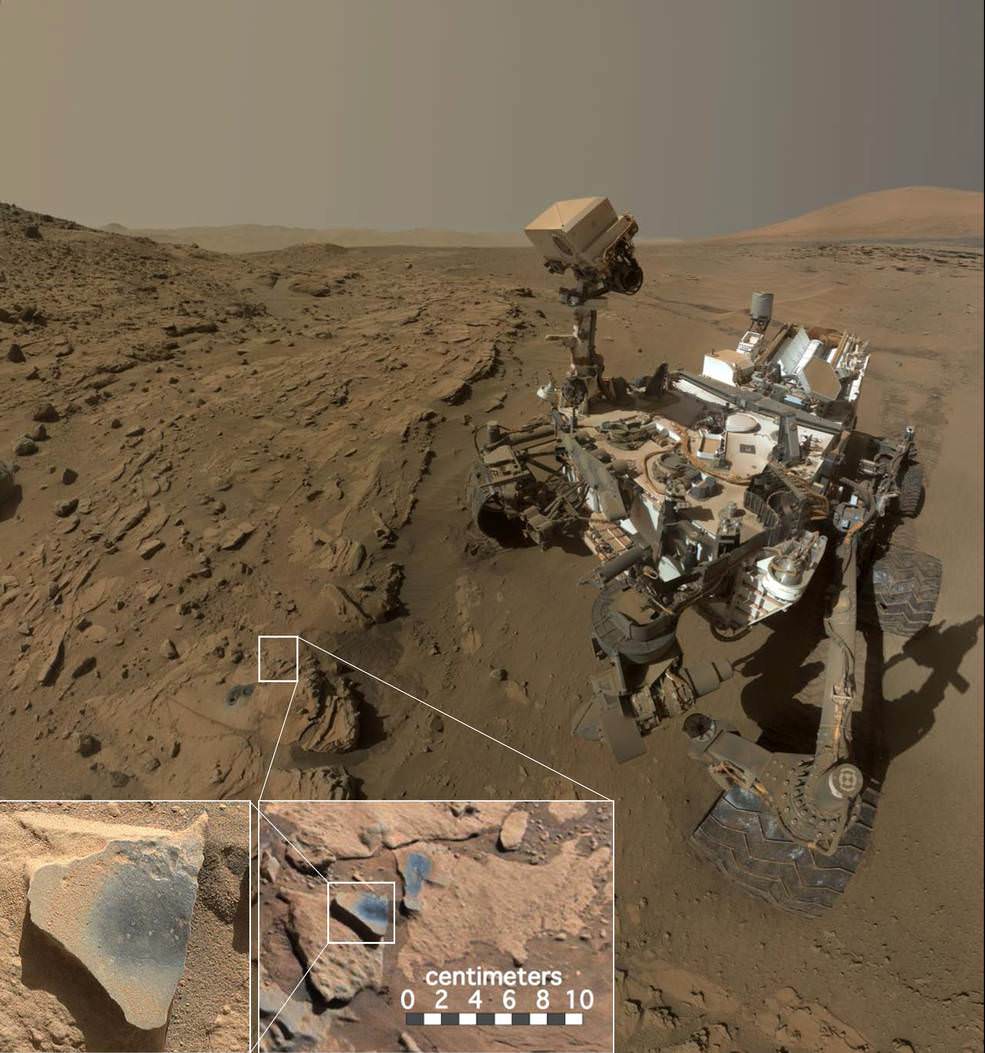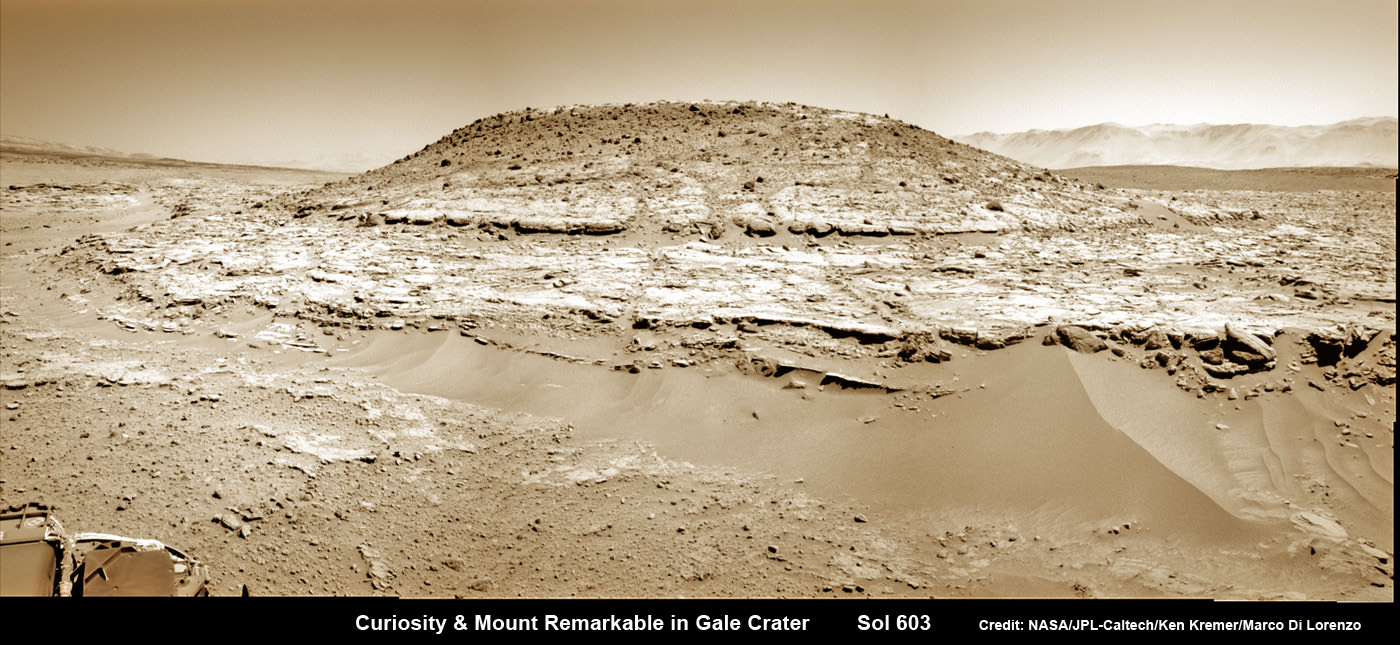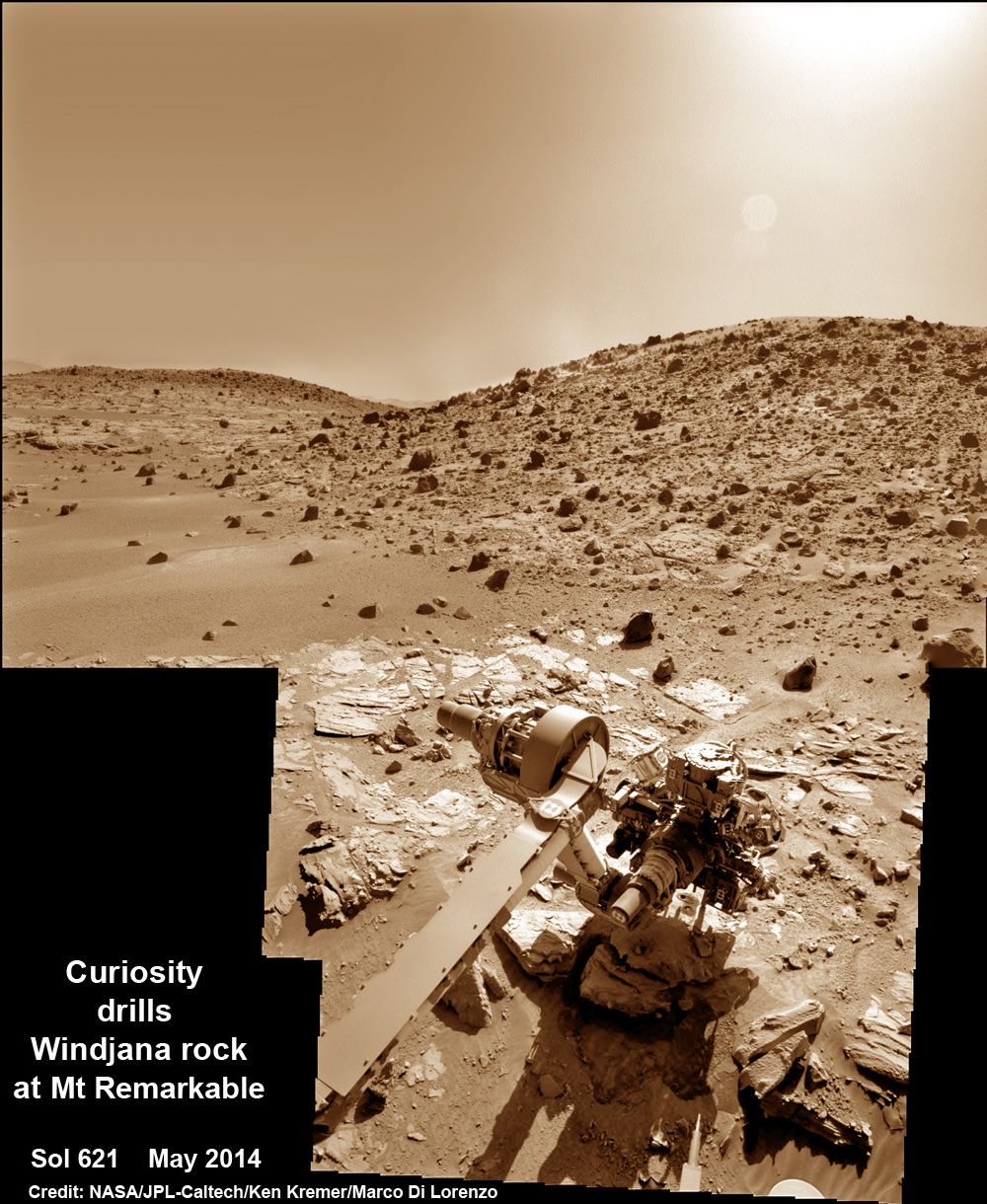
New chemical science findings from NASA’s Mars rover Curiosity indicate that ancient Mars likely had a higher abundance of molecular oxygen in its atmosphere compared to the present day and was thus more hospitable to life forms, if they ever existed.
Thus the Red Planet was much more Earth-like and potentially habitable billions of years ago compared to the cold, barren place we see today.
Curiosity discovered high levels of manganese oxide minerals in rocks investigated at a location called “Windjana” during the spring of 2014.
Manganese-oxide minerals require abundant water and strongly oxidizing conditions to form.
“Researchers found high levels of manganese oxides by using a laser-firing instrument on the rover. This hint of more oxygen in Mars’ early atmosphere adds to other Curiosity findings — such as evidence about ancient lakes — revealing how Earth-like our neighboring planet once was,” NASA reported.
The newly announced results stem from results obtained from the rovers mast mounted ChemCam or Chemistry and Camera laser firing instrument. ChemCam operates by firing laser pulses and then observes the spectrum of resulting flashes of plasma to assess targets’ chemical makeup.
“The only ways on Earth that we know how to make these manganese materials involve atmospheric oxygen or microbes,” said Nina Lanza, a planetary scientist at Los Alamos National Laboratory in New Mexico, in a statement.
“Now we’re seeing manganese oxides on Mars, and we’re wondering how the heck these could have formed?”
The discovery is being published in a new paper in the American Geophysical Union’s Geophysical Research Letters. Lanza is the lead author.
The manganese oxides were found by ChemCam in mineral veins investigated at “Windjana” and are part of geologic timeline being assembled from Curiosity’s research expedition across of the floor of the Gale Crater landing site.
Scientists have been able to link the new finding of a higher oxygen level to a time when groundwater was present inside Gale Crater.
“These high manganese materials can’t form without lots of liquid water and strongly oxidizing conditions,” says Lanza.
“Here on Earth, we had lots of water but no widespread deposits of manganese oxides until after the oxygen levels in our atmosphere rose.”
The high-manganese materials were found in mineral-filled cracks in sandstones in the “Kimberley” region of the crater.

High concentrations of manganese oxide minerals in Earth’s ancient past correspond to a major shift in our atmosphere’s composition from low to high oxygen atmospheric concentrations. Thus its reasonable to suggest the same thing happened on ancient Mars.
As part of the investigation, Curiosity also conducted a drill campaign at Windjana, her 3rd of the mission.

How much manganese oxide was detected and what is the meaning?
“The Curiosity rover observed high-Mn abundances (>25 wt% MnO) in fracture-filling materials that crosscut sandstones in the Kimberley region of Gale crater, Mars,” according to the AGU paper.
“On Earth, environments that concentrate Mn and deposit Mn minerals require water and highly oxidizing conditions, hence these findings suggest that similar processes occurred on Mars.”
“Based on the strong association between Mn-oxide deposition and evolving atmospheric dioxygen levels on Earth, the presence of these Mn-phases on Mars suggests that there was more abundant molecular oxygen within the atmosphere and some groundwaters of ancient Mars than in the present day.”
Stay tuned here for Ken’s continuing Earth and planetary science and human spaceflight news.
